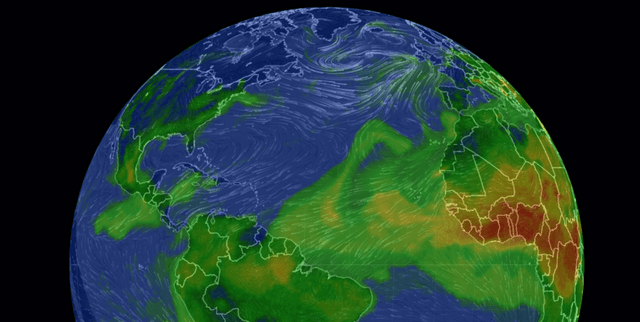Worldwide City Air Pollution Trends
Data Science and Analytics
Tags and Keywords
Trusted By




"No reviews yet"
Free
About
This dataset offers a critical look into global air quality and urban pollution trends, focusing on cities worldwide. It provides essential data for understanding environmental health impacts and the effectiveness of pollution control measures. The Air Quality Index (AQI) is the primary metric used, quantifying the concentration of key pollutants such as particulate matter (PM10 and PM2.5), nitrogen dioxide (NO2), sulphur dioxide (SO2), carbon monoxide (CO), and ozone (O3). The dataset reveals both significant progress in regions like North America and Europe due to stringent environmental policies, and persistent challenges in rapidly industrialising areas of Asia and Africa. It also provides insights into the temporary decline in pollution levels observed during the COVID-19 pandemic, highlighting the potential benefits of reduced human activity and sustainable practices. This resource is vital for examining the multifaceted issue of air quality, the impact of climate change, and the ongoing need for international collaboration to safeguard planetary and human health.
Columns
- city: Represents the name of the city for which air quality data is recorded. This column contains 6852 unique city values.
- country: Indicates the country where the city is located. There are 133 unique country values, with USA being the most common.
- 2017: Provides the Air Quality Index (AQI) data for the year 2017. Values range from 0 to 146, with a mean of 5.48.
- 2018: Contains the Air Quality Index (AQI) data for the year 2018. Values range from 0 to 136, with a mean of 5.73.
- 2019: Offers the Air Quality Index (AQI) data for the year 2019. Values range from 0 to 110, with a mean of 7.64.
- 2020: Presents the Air Quality Index (AQI) data for the year 2020. Contains various AQI values.
- 2021: Displays the Air Quality Index (AQI) data for the year 2021. Values range from 0 to 176, with a mean of 12.5.
- 2022: Includes the Air Quality Index (AQI) data for the year 2022. Contains various AQI values.
- 2023: Contains the Air Quality Index (AQI) data for the year 2023. Contains various AQI values.
Distribution
The dataset is provided as a CSV file named
air_pollution new.csv, with a size of 304.03 kB. It is structured with 9 columns and approximately 6,985 records, though the exact number of valid records can vary slightly per yearly column due to a small number of mismatched entries in some years. The file is ready for direct use in analytical platforms.Usage
This dataset is ideal for:
- Environmental health research: Analysing the direct impact of air quality on public well-being.
- Policy development: Informing urban planning and the creation of environmental regulations to reduce pollution.
- Global trend analysis: Studying the effectiveness of international efforts and technologies in curbing emissions.
- Climate change studies: Investigating how changing weather patterns and extreme events influence air quality.
- Impact assessment: Evaluating the effects of significant global events, like pandemics, on pollution levels.
Coverage
The dataset offers a global geographic scope, encompassing air quality data from cities across various countries. Specific regions mentioned include North America, Europe, Asia, and Africa, highlighting both advancements and challenges in these areas. The temporal coverage spans from 2017 to 2023, providing yearly Air Quality Index measurements for each location. While not directly demographic, the data focuses on urban populations, which are most directly affected by concentrated pollution.
License
CC0: Public Domain
Who Can Use It
- Environmental scientists and researchers: For in-depth studies on pollution trends, sources, and impacts.
- Public health officials: To assess health risks associated with air quality and implement protective measures.
- Government authorities and policymakers: To formulate effective environmental policies and urban development strategies.
- Urban planners: For designing sustainable cities with improved air quality.
- Educational institutions: As a resource for teaching environmental science, public health, and data analysis.
- Non-governmental organisations (NGOs): For advocacy and awareness campaigns regarding air pollution.
Dataset Name Suggestions
- Global Urban Air Quality Data (2017-2023)
- Worldwide City Air Pollution Trends
- Air Quality Index (AQI) Global Cities
- Environmental Air Quality Snapshot
- Urban Pollution Metrics (2017-2023)
Attributes
Original Data Source: Worldwide City Air Pollution Trends
Loading...
Free
Download Dataset in CSV Format
Recommended Datasets
Loading recommendations...
